As companies scale, they evolve, so how should marketing evolve accordingly to add maximum value? Kady Srinivasan, CMO of Lightspeed Commerce, has been through every stage of marketing growth at companies like DropBox, Owlet, Klaviyo, and now Lightspeed Commerce. In last week’s Workshop Wednesday, held every Wednesday at 10 a.m. PST, Kady shares the ten things that change in marketing as you scale.
The most basic principle in marketing is that it should never be a static function. So, the question founders and marketing leaders often ask is which lever they need to activate at certain points in the lifecycle of the company to maximize marketing’s effectiveness.
The answer isn’t simple. All companies don’t scale the same way, so it’s all about finding the right set of tactics to implement at the right stage of the company.
#1 Thing That Changes in Marketing As You Scale: The Product Maturity Curve Determines Marketing Strategy
Your marketing strategy should be extremely tightly aligned to the product maturity curve. When you’re a single-product company, you have a certain footprint in terms of your product. If you’re a growth-oriented product company, you’re creating more and more products and a platform, so marketing can never stay the same. Marketing has to evolve as you think about the product maturity curve.
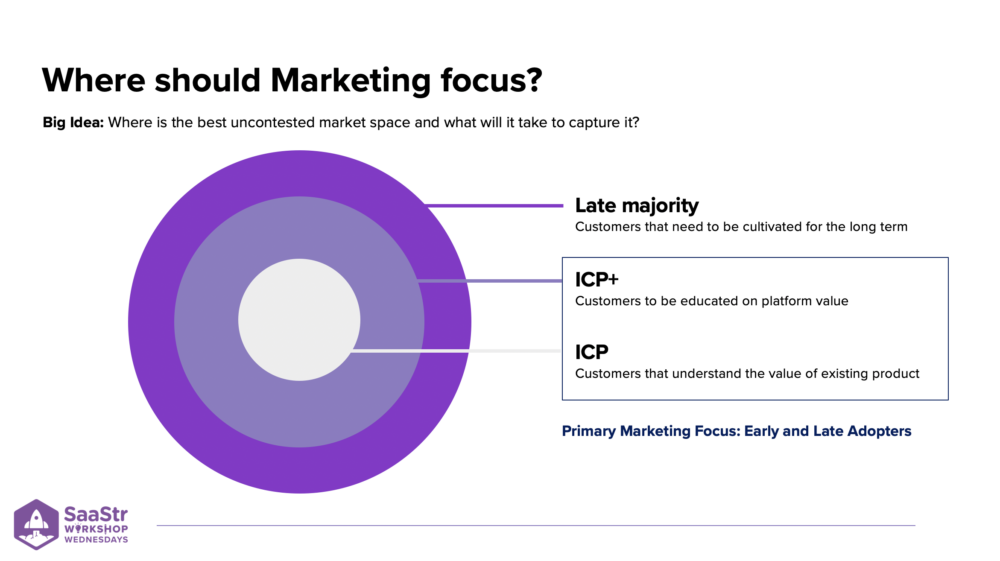
When you start anything, and you’re contemplating how to take it to market, your ICP (ideal customer profile) should always be top of mind, especially in marketing. What type of customer understands intuitively what you’re trying to give them, and how do you make sure they get to know you exist?
Initially, most companies start by focusing their marketing on where they have the most product market fit. This is the core ICP. At this stage, your marketing team should be laser-focused on finding out what resonates with your ICP: what are their needs are, how to serve this market, how to differentiate yourself vs competition. But, as you grow, you start to reach the limits of what your original ICP presents.
Start to identify what Kady calls the ICP+, or Customers that need to be educated on your platform’s value and what differentiates these customers from the early adopters of your product. Work with the product team to really position the benefits to the late adopters. As your company hits maturity, you will be marketing to both the early ICP (customers who inherently understand the value of your existing product) and laggards, the ICP+.
Both require a different set of tactics and positioning needed. Whereas early adopters inherently understand your product, the ICP+ or late adopters require a greater sense of urgency and FOMO and more education on how the product will directly benefit them. You can get a lot of value and momentum from early adopters. Once you reach momentum and hit a tipping point with market share, it creates a machine of its own.
The takeaway: determine your marketing strategy and tactics based on where you are in product maturity curve.
#2 Change in Marketing As You Scale: Handling Complexity Like a Pro
You don’t want to oversimplify complexity. The reality is that a lot of things change as we scale. For instance, you could go after different audiences or demographics, new products are created or bought, integrations with ecosystem partners gets complicated, and different industries and personas are added to the equation. Especially for Enterprise software, there is no single persona in the buying journey. If you’re self-serve appealing to SMBs, you have a budget owner and decision maker. Enterprise has a budget owner, influencer, decisionmaker, and finance person to sign off.
You have multiple personas, and all of a sudden, you’re confronted with figuring out what the marketing strategy needs to look like for this kind of Enterprise audience.
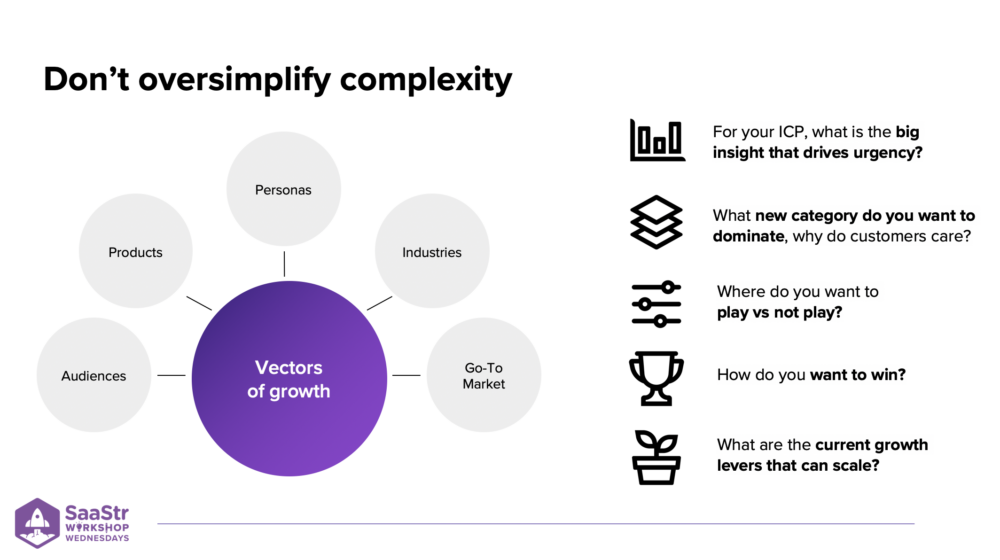
The last vector of growth that creates complexity is Go-to-Market (GTM), and how you create a GTM motion can make or break your growth cycle. Knowing where to you invest time and resources as everything seems to get more complicated creates complexity as well.
To solve for this, Kady has seen that Product marketing needs to evolve to define a value proposition for a bigger suite of products and a bigger set of benefits as the complexity grows. For example at Lightspeed Commerce, they are both a SaaS and a Fintech company. Product marketing become vital for Kady and team to reach new audiences, enter new markets, and keep their story fresh and engaging. Because they are now trying to serve multiple audiences, marketing complexity grows and the marketing team had to evolve to be able to communicate the value prop in a new and different way.
Unit economics of each of these customer segments is so vastly different that you need tactics strategies. For instance, when you’re at a series A stage – your marketing strategy with early adopters will likely be SEO and inbound marketing. Series B, your main tactic could expand out to influencer marketing. Series C – paid marketing kicks in at that point once you have budget.
In the quest for making quick decisions and moving fast, which is the DNA of all good startups, folks tend to oversimplify this complexity. Instead, ask these five questions.
- What is the big insight that drives urgency?
- What new category do you want to dominate?
- Where do you want to play vs. not play?
- How do you want to win?
- What are the current growth levers that can scale?
Once you put some effort behind these, the answers get clearer about which levers of complexity to optimize for.
#3 Change in Marketing As You Scale: Know Your Motion
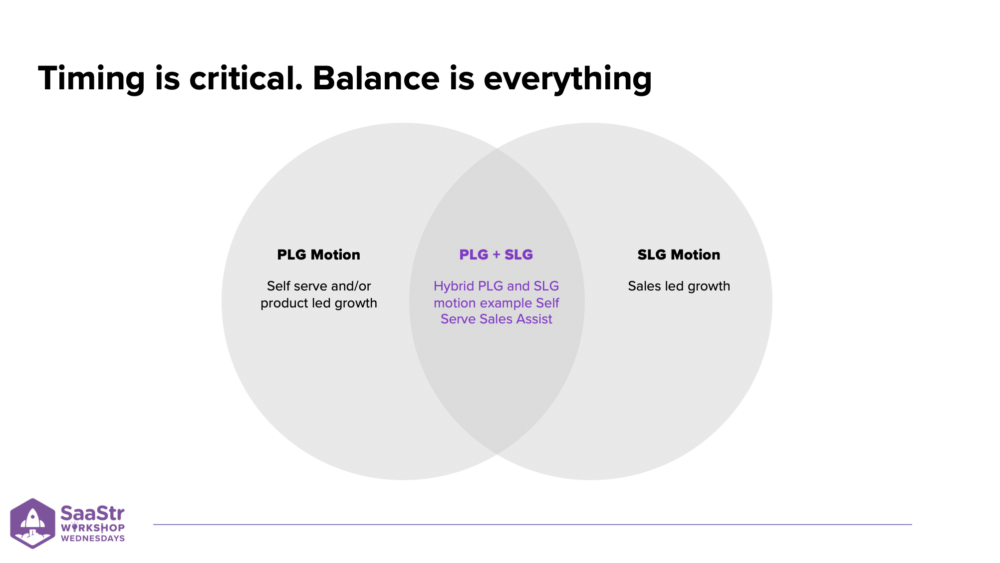
There are multiple ways to scale your Go-To-Market. PLG-bottoms-up-self-serve growth is when your product is so intuitive and user-friendly that people can sign up and use it on their own. There’s minimal human intervention. Some of the biggest SaaS successes like Slack and Klaviyo, made it easy for customers to use the platform upon direct sign-up. A PLG (product-led growth) motion requires a real focus on product, analytics, and growth-minded marketers who can take this vision and make it happen.
On the other side of the spectrum is sales-led growth, which requires a lot of human touchpoints. You can also combine the two, as Kady did at DropBox, with a self-serve sales-assisted motion. While most SaaS companies these days start with one or the other and typically diversify, as your marketing scales, it’s important to define who you’re supporting. At different points in the company’s life cycle, different motions become more relevant. The most important thing is to calibrate where and how revenue comes in and where marketing needs to support it most.
Some of these motions are much larger investments, especially in sales-led — hiring people, commission planning, etc. So, recognize where you want to grow, what you want to be known for, where growth is coming from, and how much it will cost. There are no right or wrong answers when it comes to PLG vs SLG or a hybrid of the two. It all boils down to where you can unlock the most value from your funnel.
#4 Change in Marketing As You Scale: Brand Investment — Right Time, Right Place
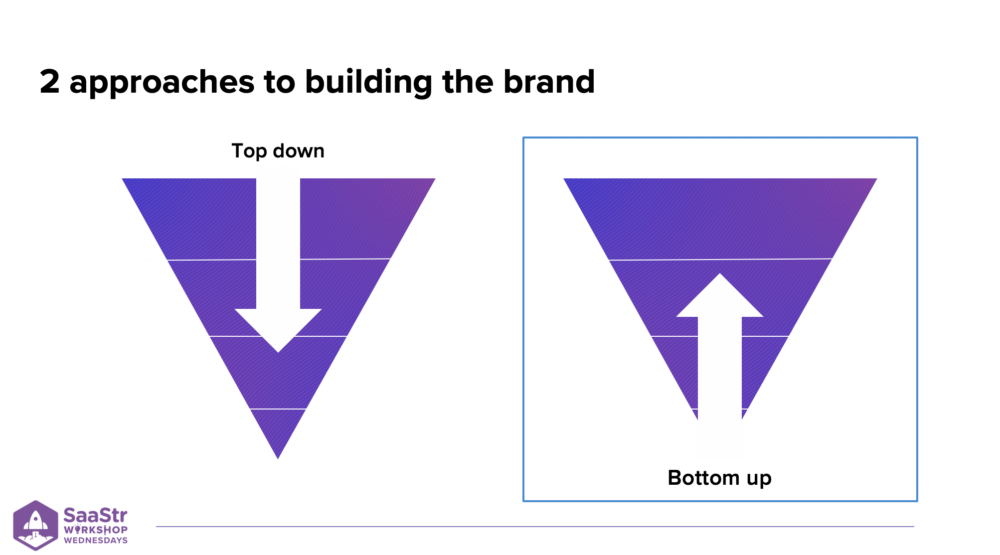
Kady shared a story on the workshop of how she recently spoke to a couple of founders at sub-$500k in ARR. They said they wanted to build out their brand right away and wanted to know if it was wise to invest in the brand. Kady said no.
She thinks of brand building in two elements:
- #1 A top-down approach to brand: This approach does not want to segment the market but instead raise broad awareness of your product in a specific area. You want to lift the baseline quickly with a bunch of investment, and this works for some people and companies looking to establish themselves in a market quickly and with maximum impact. You can also get a halo effect out of that investment in a market. Where this doesn’t work is for the scrappy, small startup marketing budgets looking to establish a foothold in a niche area.
- #2 A bottoms-up approach to brand: This is where you figure out who your audience is and go after them in a very targeted way. This requires more investment in understanding your ICP and the value prop of the product. You get more deliberate about the product, taking it market by market.
#5 Change in Marketing As You Scale: Vital Elements — Leverage Your Ecosystem
One thing that is often underleveraged is the ecosystem. The idea of an ecosystem is having the right partnerships and people feeding you value for you and your customers. But, if you don’t do this right, it can become a runaway train. Many partners talk about you in potentially the wrong ways, and it becomes price competitive.
Here is a simple framework for maximizing the idea of building an ecosystem.
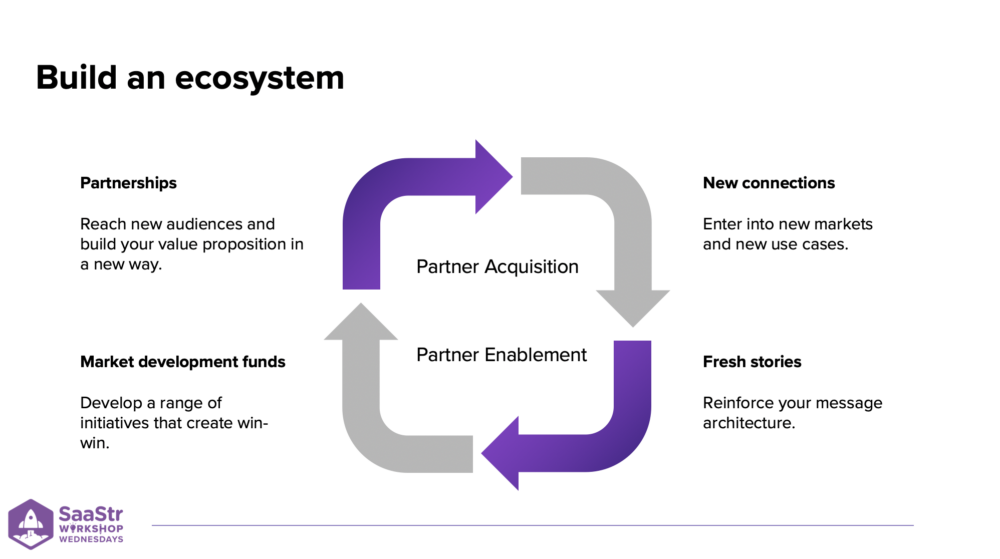
You have to reach new audiences, acquire new partners, and enable the ones you have. Leverage your partner ecosystem. Treat partners as another channel – focus on acquisition and enablement.
#6 Change in Marketing As You Scale: ABC — Always Be Connecting
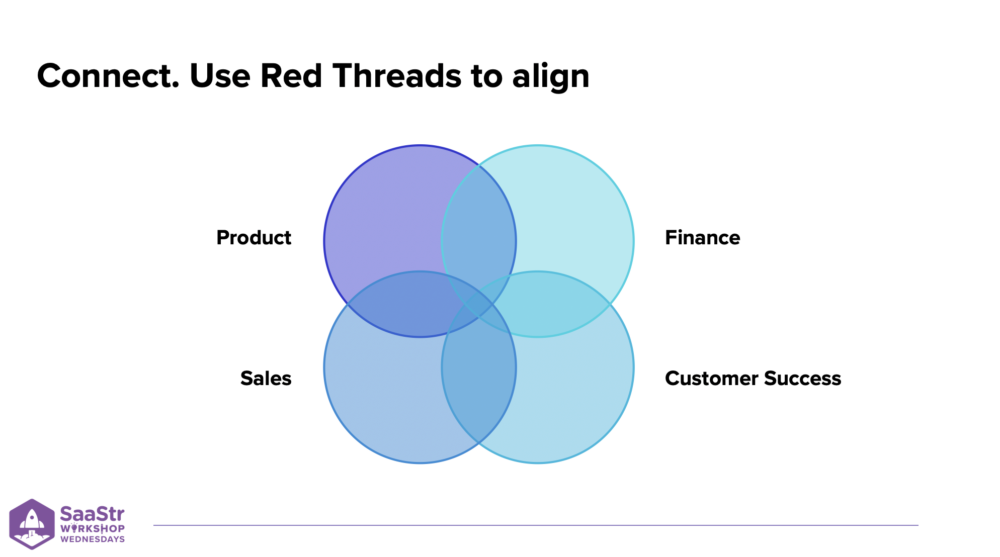
If you’re a marketing leader, you know your job isn’t just in marketing. You’re trying to bridge a lot of different departments in the company together. How you do this is important. It won’t be the force of your personality but the red thread. A red thread is a set of unifying principles or attributes that get teams aligned with the work you’re doing. Create red threads that resonate across all departments and use them to drive the agenda forward for the company.
#7 Change in Marketing As You Scale: Slim Down the Marketing Budget
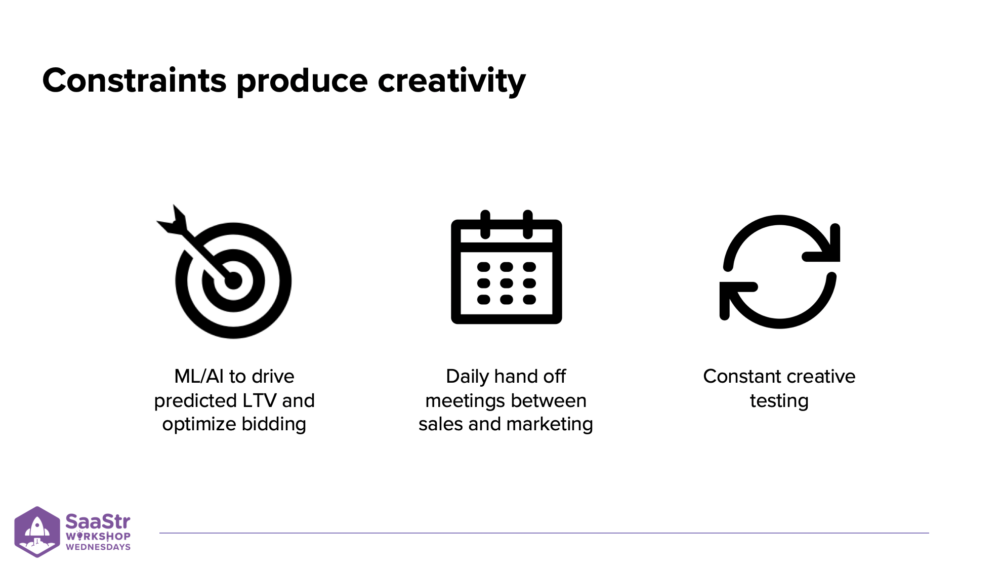
For every company Kady has been in, her first job was to figure out how to reduce marketing spend but increase efficiency. Ongoing experimentation is needed, and some partners are good at helping you understand how to create more optimization. At Owlet Kady decreased spend down to 17% of revenue while doubling growth and over the years, reduced their marketing spend by 30% while increasing pipe by 15%.
The three things that we have control over to help gain efficiencies in the marketing budget and slim costs:
- The latest GenAI. There is so much to do with AI to drive campaign optimization. Utilize this as much as possible.
- Daily hand-off meetings. These usually happen once a month, but they should happen once or twice a day. A regular clean handoff will do wonders when trying to cut costs.
- Constant creative testing. The number of times content and design don’t work well with the performance growth team is unbelievable, so keep this top of mind.
#8 Change in Marketing As You Scale: Position, Position, Position
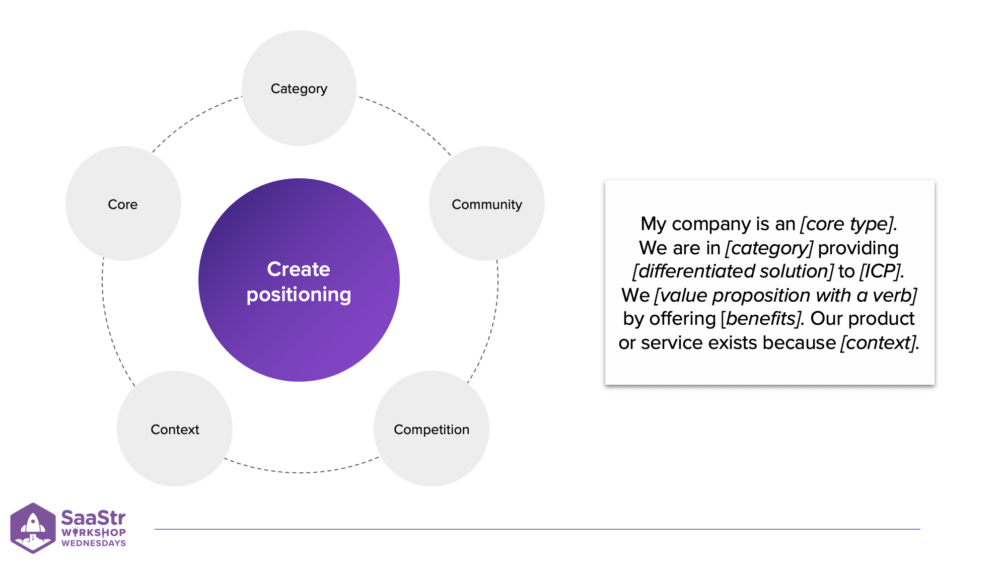
Marketing has to continuously evolve regarding how you position the company and product. There are three types of companies in the world — Product-focused, customer-focused, and concept-focused. You need to assess and diagnose what kind of company you are and, based on that, create the positioning around what you want to be known for. Why should people believe in you? Always keep your eye on these five things and make sure positioning is always updated.
#9 Change in Marketing As You Scale: Scaling the Marketing Org
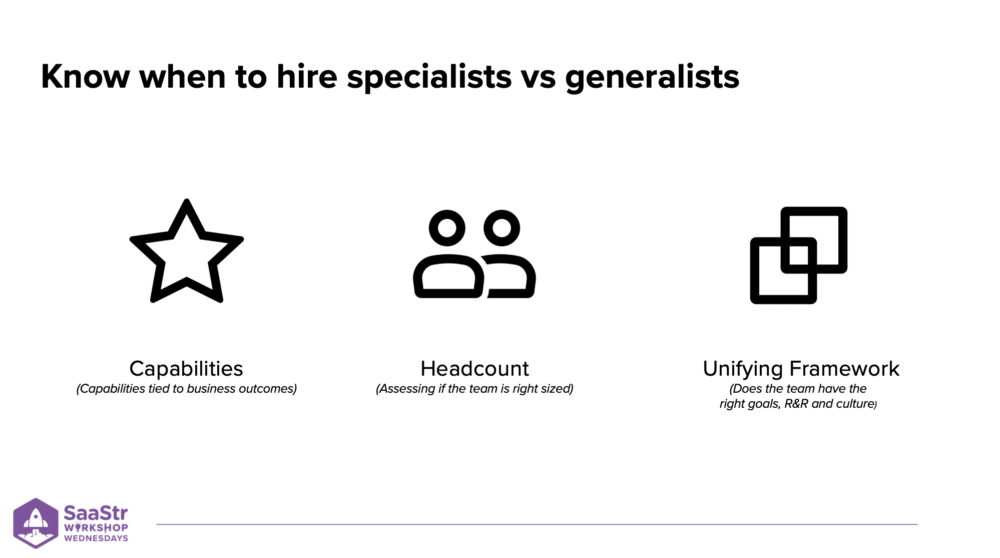
How do you know when to hire a specialist vs. a generalist? As organizations grow their marketing team, they either hire too many generalists or too many specialists and put them in silos where they don’t come together or work together.
Depending on where you are in the evolution of your marketing team, think about the capabilities you want to have in the team.
- What kind of headcount do you have?
- What is the unifying framework?
- What are the goals, responsibilities, or culture?
Even though this is about marketing,k you have to go beyond marketing and look at sales and other GTM groups to figure out the balance of generalists and specialists.
#10 Change in Marketing As You Scale: Map Maker vs. Market Creator
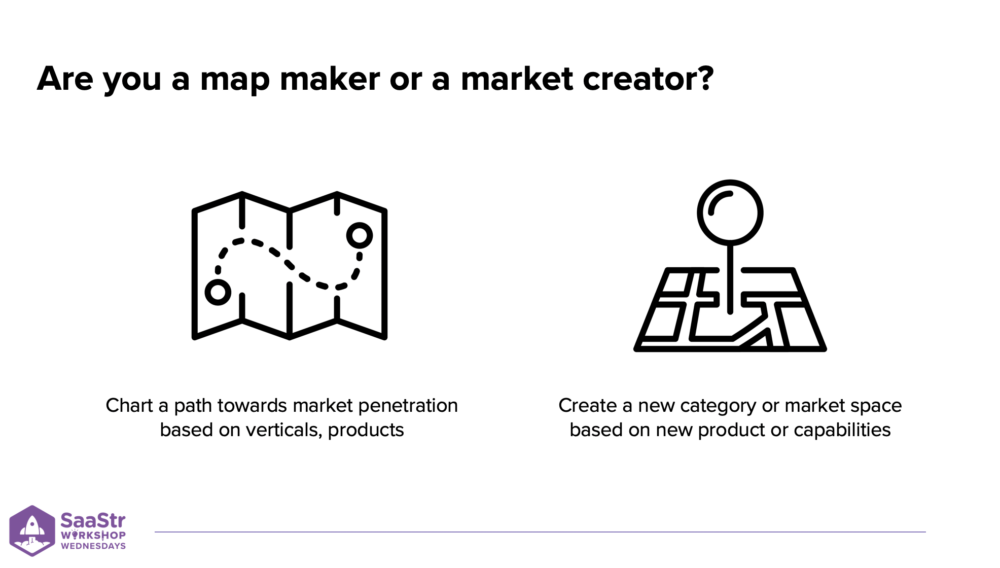
Are you a map maker or a market creator? There’s no right or wrong answer. As a company, and not just marketing, you have to determine if you’re charting a map where you know where you’re going, and you just need to get it. Or, are you in a completely uncontested new space, and you don’t know how to define what you have? That’s about becoming a market creator.
Some have a clear path to market leadership, and others don’t. You need to become extremely clear with founders, executive teams, and boards on the persona and the moves you need to make to get there.
Key Takeaways:
In essence, marketing in a scaling company needs to be dynamic, adaptable, and aligned with the company’s growth stage, target market, and overall objectives:
- Product Maturity Curve Determines Marketing Strategy: Align marketing closely with the product’s development stage. Focus initially on the ideal customer profile (ICP), then expand to educate later adopters (ICP+) about the product’s value.
- Handling Complexity: As a company grows, it faces more complex challenges like targeting different audiences, integrating new products, and dealing with various personas. Marketing strategies must adapt to handle this complexity.
- Know Your Motion: Understand and adapt to the appropriate go-to-market strategy, whether it’s product-led, sales-led, or a combination of both. This strategy should align with the company’s stage and growth objectives.
- Brand Investment: Timing and context are crucial for brand investment. Early-stage companies might not benefit from heavy brand investment, whereas more established companies might.
- Leverage Your Ecosystem: Use partnerships and collaborations effectively to reach new audiences and enhance value for customers.
- Always Be Connecting: Marketing leaders should work to integrate different departments within the company, creating a unified approach.
- Slim Down the Marketing Budget: Focus on efficiency and effectiveness in spending. Utilize tools like AI for optimization and maintain constant communication and creative testing within teams.
- Position, Position, Position: Continuously evolve the company’s positioning, whether it’s product-focused, customer-focused, or concept-focused.
- Scaling the Marketing Org: Balance hiring between specialists and generalists based on the company’s needs and growth stage.
- Map Maker vs. Market Creator: Determine whether the company is following a known path (map maker) or creating a new market space (market creator). This decision impacts strategic planning and execution.
The post 10 Things in Marketing that Change as You Scale: Lessons from Dropbox, Klaviyo, Lightspeed Commerce with Kady Srinivasan, CMO of Lightspeed Commerce appeared first on SaaStr.
via https://www.aiupnow.com
Amelia Ibarra, Khareem Sudlow
